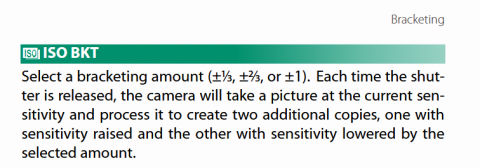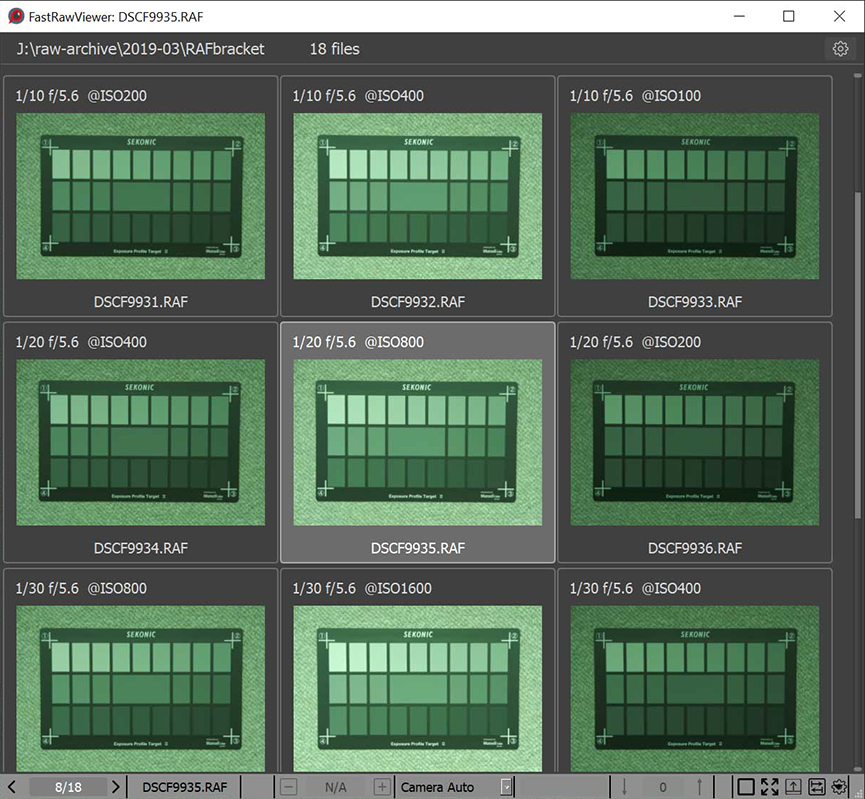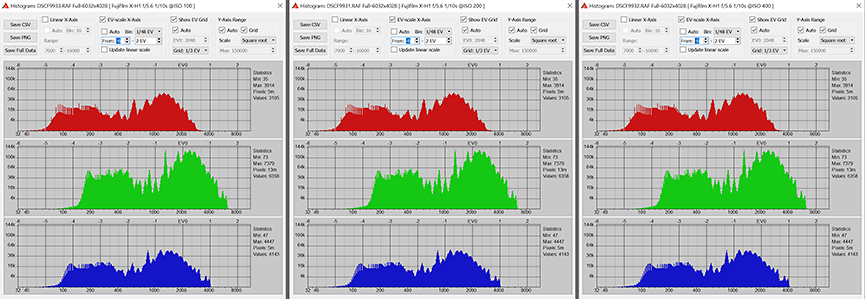A Curious Case of ISO Bracketing with Fujifilm X-series
Spring is Here!
All LibRaw Products and Bundles - 25% off
Our Special Prices are valid until May 06, 2024.
Esse quam videri
Cicero
Sometimes to follow Cicero's maxim, "To be, rather than to seem", is not that simple.
A few days ago, a FastRawViewer user turned to us with a question:
"I took a series of photos with ISO bracketing, but FastRawViewer shows them all in the same way on the main window, even though the JPEG previews are different. I think you have a bug!"
In answering him, we suggested several reasons as to why this is happening (in FastRawViewer, Auto-ETTR is turned on, Auto-ETTR was used manually...), among which was the option that "It's possible that your camera doesn't even do anything when the ISO is changed," (such examples are known, starting with the Canon's ISO 50, but in general there are a lot of them).

The user sent us the files, and the result was...exactly that; the automatic change of the ISO setting while bracketing didn't affect the RAW data at all.
Because we didn't have permission to publish those files, we asked another user with the same camera to take sample shots for us, and below you can see the results.
As such, we would like to formally introduce you to Fujifilm X-H1 in ISO bracketing mode.
In the user manual, this mode is described as follows (page 84 of the user manual):
The description is not entirely obvious, but we can clearly see the words "sensitivity raised," which promises Good Things(TM).
In search for those good things, we've examined a few series of shots taken with Fujifilm X-H1 in ISO bracketing mode (three of such series are on the screenshot below, displaying 9 embedded JPEGs, 3 for each series; the reason they're greenish is that they were shot in UniWB). As you can see on the screenshot, EXIF data indicates that only ISO setting changes in each series, while shutter speed and aperture stay the same.
The lightness of JPEGs changes accordingly to ISO setting, by ±1 stop. This all looks like real bracketing so far.
But if we take a look at the RAW histograms (below are the first three shots as an example: from the left to the right - ISO 100, ISO 200 and ISO 400), then not only are they similar, they're identical:
Which, in turn, is not at all surprising because only one shot was ever taken, the RAW data of which was later recorded to each "bracketed" shot.
These shots differ with respect to the RawExposureBias tag (this is the exiftool name for this tag, numerically this is tag 0x9650 in the Makernotes). The value of this tag is in EV and instructs RAW conversion software to adjust lightness accordingly:
exiftool -filename -RawExposureBias -T DSCF9931.RAF DSCF9932.RAF DSCF9933.RAF
DSCF9931.RAF -0.7
DSCF9932.RAF -1.7
DSCF9933.RAF +0.3
Thus, if you intend to shoot in RAW, then the ISO bracketing mode on this camera is completely pointless for you (considering the illusions that emerge as a result and the wasted space on the flash card, it's actually somewhat harmful).
It's obvious that for digital cameras, bracketing by ISO only makes sense if the raising of ISO decreases read noise, but that does not hold for all cameras and through the whole range of ISO settings. Nonetheless, not doing anything to RAW data is unexpected, one might even say it is beyond the pale.
A quick look through the manuals of other Fujifilm cameras revealed the fact that it is not only in the X-H1 that bracketing by ISO was done in this manner. The same description is contained in the manuals for X-Pro2, X-T3 (X-Pro1 as well, but it's inconvenient to hyperlink to this description directly - so, please go to the page 35 manually).
To Be or To Seem: WYSIWYG or WYSIWYM?
- So, the question of "well what do we do with this?" popped into our minds, meaning what should FastRawViewer do with this:
- On one hand, showing identical (with regards to the data) RAW files as being different will only confuse (not enlighten) the user.
- On the other hand, all other software displays such shots with different lightness and the user is confused as well.
- On the third hand, we already process Fujifilm tags, for example "DynamicRangeSetting," and comparable tags for other cameras (this is, in essence, underexposure by several stops, which leads to an increase in the headroom in the highlights and the dynamic range, in the everyday photographic meaning of the word, is also increased - it actually isn't: the sensor is the same, but the the amount of clipped highlights is decreased because the exposure is now lower).
Our Solution
- The solution is as follows:
- Consider these tags "like all" (for now, only for the X-H1, but based on reading the manuals we will have to do this for the entire X-series) with the settings on default.
- If someone wants to see the real RAW exposure, then one will need to uncheck the 'Apply Adobe hidden exposure correction' checkbox (like for other tags).
Conclusion
The cause of this is a lack of standards: "ISO speed and ISO speed latitude values shall not be reported for raw images, however, because with raw images processing that affects the values has not been performed" (ISO 12232:2019).




Comments
Kevin Baildham (not verified)
Sat, 11/06/2021 - 12:18
Permalink
A Curious Case of ISO Bracketing with Fujifilm X-series
Thankfully, this article has halted my fruitless searching for any info regarding the usefulness of Fujifilm X-H1 ISO bracketing with RAW images. Nothing found, as confirmed here.
Add new comment